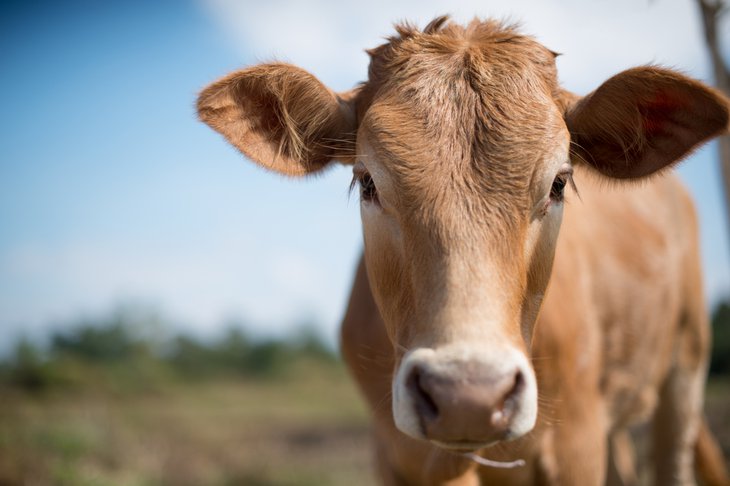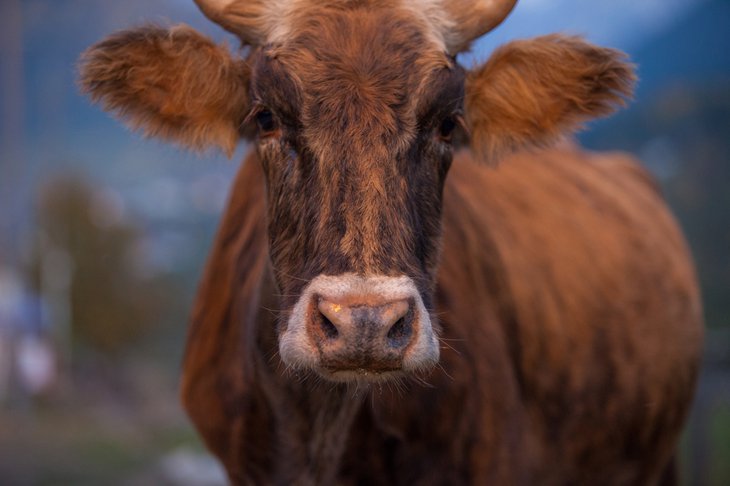Leather Economics - A Global View
Updated

Leather is made from animal hides. There are animal-friendly methods of procuring hides for leather, and there are methods that are less than humane. We’ll talk about both here and give some tips on what types of leather you might want to buy, and some reasons why some types of leather are more expensive than others.
Where do the Animal Hides Come From?
Animal hides have been used almost since the dawn of mankind for making clothing and shelters. People would raise livestock, hunt, or scavenge animal carcasses, and then use as much of the animal as they could. They would drink the milk, eat the meat, craft the bones and horns into tools or weapons, the skulls into ceremonial or decorative pieces, the teeth into trophies to wear around their neck, the stomachs and bladders as water skins, the blood and brains as dyes, and the outer skins into blankets, shelter covers, loincloths, leggings, shirts, cloaks, hoods, and shoes. Sometimes the fur or hair of the animal would be left on the hides for warmth and style, and sometimes people would remove it to better preserve the skins as rawhides.
If our ancestors in early civilizations could find a way to use a part of the animal, they did so. Larger animals were, of course, more valuable because they could reap more meat and larger skins from such animals, but resources were scarce, and they didn’t mind hunting and trapping smaller animals when they needed to. They would glean as much meat as they could from animals as small as squirrels and then stitch the skins together to make clothing items. (The stitches were sinews and tendons.)
Today, the tradition of using the whole animal continues in large part but has been modified by scale economics, the use of synthetic or alternative materials, and technological advancements. In large part, we still use most of the meat and dairy products for human consumption, but what we call the byproducts of the animal carcass are used in animal food. With large cattle, pig, and sheep ranches, we don’t need to hunt or raise small rodents for meat or leather, though some hobbyists still do so on a smaller scale. We don’t usually use brain and blood tanning or dyeing as chromium and vegetable methods produce superior results with easily accessible materials. We also no longer rely on our local wildlife only. We source hides from animals raised, hunted, and scavenged from all over the world.
Animals are raised where they have room to graze. Cows are the largest source of leather, making up 65% of the leather industry because they are large animals, tame animals easy to raise for dairy, meat, and skins. The largest populations of cattle and thus the largest ranches and hide producers are based in China, India, Italy, Brazil, Korea, Russia, and the US. Where the animals are raised plays a large part in how they are treated, which we will cover in the Purchasing Leather: Ethical Concerns section.
Animal Hides and Leather Quality
Cows are the largest source of leather, and they do produce thick, durable, sturdy leather. But every animal has a unique hide with desirable qualities for particular applications.
- Sheepskin provides a soft fleece and is less stiff than cow leather
- Pigskin is naturally denser and more water resistant and is therefore useful for making gloves, shoes, and sporting equipment
- Goatskin and deerskin are incredibly soft, thin, and easy to shape
- Shell cordovan from horse hides is shiny, smooth, and keeps its shape without creasing
- Kangaroo leather is particularly flexible, perfect for such items as punching bags, bullwhips, and motorcycle jackets
- Stingray leather is abrasive resistant and is commonly used on decorative sword hilts and in the motocross racing industry
- Snakeskin, alligator skin, and ostrich skin all have unique patterns and textures desirable for fashion apparel
You can emboss and finish cowhide to look like other types of leather, but the durability, texture, malleability, and wear attributes can only be minimally changed. When you want something more than appearance, or when you want authentic fashion, you need to use leather from a specific animal known for your desired qualities.
Because cowhides are the most readily available, you should also expect products made with cowhide leather to be relatively more affordable than other types of leather. Snakes, for example, do not grow very large unless raised and fed well for a long period of time. It is not economical to raise snakes for leather, and they have very few purposes besides. You can still buy snakeskin and other exotic leather products from niche dealers, but expect to pay a high premium for them. They will most likely come from a specialty breeder who works exclusively with one leather dealer. Leather crafters and manufacturers wanting to produce exotic leather goods will pay a higher cost to these dealers to procure the quality of leather they want in the quantity that they need.

Importing and Exporting Animal Leather
The trade of animal skins has been big business since the discovery of leather. Early indigenous societies not only realized that animal skins were useful for covering themselves and their shelters but that if they cleaned them, removed the hair or fur, spread animal fat on them, and smoked them, they wouldn’t split or rot nearly as quickly. Once they knew how to preserve the skins, they were able to use them to trade with other tribes and even other civilizations. Hunters would make their living selling raw pelts. Buyers would collect a shipment of pelts from trappers and sell them to a tannery. The tannery sold them to a textile manufacturer and the textiles sold back to supply stores. A pelt that a trapper claimed in America might be shipped across the ocean to England for processing and then imported back into America as leather fabric for a seamstress to craft into a hat for that same trapper.
A very similar leather import/export circle exists today. Let’s look at the cycle from an American perspective. The largest rawhide suppliers are Italy, the US, Brazil, and Hong Kong with China, Australia, and Thailand all growing and poised to dominate the market in the near future. These countries are where the animals are raised, butchered, and skinned. America is number two in producing livestock that will be partially used as leather.
The biggest importers of rawhides, however, are China, Italy, Hong Kong, and Viet Nam. These are the countries that tan the hides and process them into leather textiles. America is ninth on the list, and growing in demand. That means that we export more rawhides than we import, but we still need a significant amount of imports for our own tanning. It doesn’t make a lot of sense from a macroeconomics point of view, but each rancher has set up their own buyer, and each tannery has negotiated prices with their own suppliers. Cattle rancher Joe might sell his rawhides to Asif in India while leather tanner Jim in the next town over buys his rawhides from Bilal in Pakistan.
After tanning, the leather is then made into finished products, such as jackets, purses, and wallets. The largest exporters of finished leather goods are China, Italy, Hong Kong, and France. The US is the eighth largest exporter of finished goods. That means that we sell more of our products domestically than we ship to other countries.
This buying and selling of hides is an $85 billion industry. It’s big business, and developing countries are increasing their production of rawhides, tanned leather, and finished products to claim their piece of the global market. As they develop, their ability to import and buy their own finished leather products will increase as well.
Purchasing Leather: Pricing Factors
If you’re buying a leather wallet, for instance, the largest contributing factors to its price will be source material, processing, and branding. Who raised the animal and sold the skin to whom, and who finally processed and put their label on it?
Because China produces an estimated 80% of the world’s leather goods, we’ll use them and America as examples of pricing differences, as well as processing methods. A rawhide sold from a Chinese ranch to a Chinese tanner, sold to a Chinese factory for production into a leather wallet will naturally cost less than an American sourced, processed, and finished product. Why? Because the cost of living in China is less than in the United States.
We’re not saying that the cost and standard of living should be less in China or any other nation, or that we want to buy cheaper goods of the same quality from a less wealthy country, but the fact is that they set their own prices in order to compete in a global market. It makes sense for them to sell low so that they can sell more. They’re scaling their business horizontally in order to then grow it vertically. American businesses can’t lower their prices in many instances because it costs more to live and pay employees here.
The caveat to American pricing is branding. All other factors the same, if a company can convince you that they have produced a more durable, fashionable product, they can sell it at a higher price. We personally believe that pricing should be based on material cost and durability, quality construction, and useful design rather than brand names.
Purchasing Leather: Ethical Concerns
We are not against real, animal leather. We like leather. We also like milk on our cereal and meat on our burgers. We are not against developing nations providing a better standard of living for their citizens or companies selling products for prices they can afford. We are not against buying products that have been imported from other nations if those products provide the durability and features we’re looking for.
What we are against is animal cruelty. The treatment of animals is a major concern in the leather industry and among buyers of leather products.
Look for companies that detail what their leather is and where it comes from. What country did the leather come from? Do they have laws in place that protect endangered wildlife or enforce laws protecting animals from abuse? If not, the animal might have been poached or raised in abusive conditions. Some animals are tortured with chili powder in their eyes or dismembered without being killed first. Nations who cannot afford to feed their citizens properly certainly cannot feed their livestock with the proper nutrition.
Does the company advertise their product as being made of cowhide? Sheepskin? Cordova? If not, you don’t know what type of animal it came from.
Read as much as you can about a leather product. The company should be upfront about their material and practices. Vague or undisclosed information is ample cause for doubt.
Conclusion
Leather is a product of raising livestock. Most leather today is made from cowhide, but specialty dealers make leather from other animals to take advantage of their unique attributes. Where the animals are raised and processed plays a significant role in pricing and how the animals are treated. Specialty leathers and hides from developed nations will naturally cost more than those from developing countries.



















